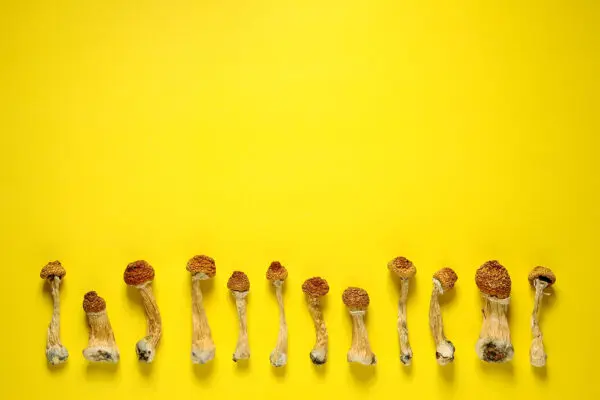Medical Editor: Dr. Lynn Marie Morski, MD, Esq
As microdosing becomes increasingly popular, more and more questions arise about the practice and its potential influence on mood, creativity, and productivity.
Information is abundant in media and community forums regarding microdosing psychoactive substances such as LSD and psilocybin. MDMA, while sometimes regarded as psychedelic, is hardly mentioned despite the increasing number of research efforts surrounding its benefit for the treatment of post-traumatic stress disorder (PTSD).
Here is what is both unknown and known that can help inform decisions about microdosing MDMA.
What is MDMA?
MDMA (4-Methylenedioxy-methamphetamine) is a psychoactive substance that produces the effects of both stimulant and hallucinogenic drugs at the same time.
It was first synthesized in 1912 while developing a different pharmaceutical and was subsequently patented by Merck in 1914 for its potential as a medicine. MDMA was used for a short time by psychiatrists in therapy sessions before being banned in 1985 amidst concerns about the increasing rate of recreational abuse during what was called the ‘War on Drugs.’
In its pure, therapeutic-grade form, MDMA is different from the street drug referred to as ecstasy or molly. Although the term molly was coined to reference MDMA in a pure, crystalline molecular state, both of these street drugs are nearly always adulterated with other substances and may not contain any traces of MDMA whatsoever.
MDMA functions by activating a release of serotonin in the brain and temporarily blocking reuptake, usually resulting in a state characterized by euphoria, social openness, and a sensation of emotional well-being. It is called an empathogen due to increased awareness of and connection to others it tends to facilitate. MDMA also decreases activity in the amygdala, the brain’s fear center.
Studies are seeking to further understand the possible benefits of MDMA in the context of psychotherapy for PTSD, as well as treatment-resistant depression and counseling for fractured relationships.
Researchers conducting trials are hopeful that MDMA-assisted psychotherapy will pass Phase III Clinical Trials and become FDA-approved for use in supporting a variety of conditions in a more dynamic and effective way than currently available treatments.
Can you microdose MDMA?
Generally speaking, people who microdose psychoactive substances like psilocybin and LSD report doing so in hopes of achieving results like alleviating mental health symptoms, increasing focus, improving productivity, and feeling more emotionally connected to others (to name a few).
Because it is among a number of psychoactive substances that can produce positive effects, it might seem appealing for people casually familiar with MDMA to attempt self-medication through microdosing. However, there are legitimate reasons for the lack of dialogue in support of MDMA microdosing.
Studies involving MDMA have mostly focused on the potential benefits of a full dose taken three times or less and only during therapy sessions with a knowledgeable co-therapist team. The practice of microdosing has not been a focus of studies, making it difficult to discern dosing practices and optimal frequency of use, as well as to decide if microdosing MDMA is effective and safe. Due to the lack of research on small, regular doses, it simply isn’t known if or how microdosing MDMA can offer benefits.
Risks of microdosing MDMA
Taking psychedelic substances, regardless of dosage, carries with it a risk of adverse effects. While studies have indicated beneficial uses for MDMA-assisted psychotherapy administered with the guidance of a practitioner temporarily and infrequently, taking it too often has the potential to produce negative effects.
Taking MDMA routinely over time is known to increase tolerance levels, requiring a higher dosage to produce the desired effect.
Because MDMA is only available legally in a study setting and for limited purposes, many people take matters into their own hands and obtain the drug illegally. Known recreationally as ecstasy or molly, MDMA purchased underground for personal purposes is almost always adulterated. It is often lacking in any MDMA content whatsoever, containing a variety of other harmful substances that cause excitatory effects often mistaken for the experience an unsuspecting user anticipates from MDMA.
Physical responses like elevated heart rate and blood pressure are known results of MDMA use but might become dangerous depending on existing health risks, environment, or interactions with medications and other substances. MDMA increases body temperature which can pose a risk for hyperthermia. Diarrhea and dehydration can also occur.
Is MDMA legal?
MDMA is currently under review by the FDA for potential approval as a therapy for certain conditions, but it is currently a schedule 1 drug that is illegal for personal use. Producing MDMA is only permitted in a clinical setting for specific medical and research purposes.
Additional information
Reliable information about MDMA is available from these sources:
Multidisciplinary Association for Psychedelic Studies (MAPS)
–Scientific Literature, Government Hearings, and Archive
U.S. National Library of Medicine – Methylenedioxymethamphetamine (MDMA) in Psychiatry: Pros, Cons, and Suggestions
Global Drug Survey harm reduction checklist for first-time users of MDMA
Drug Policy Alliance MDMA Fact Sheet








